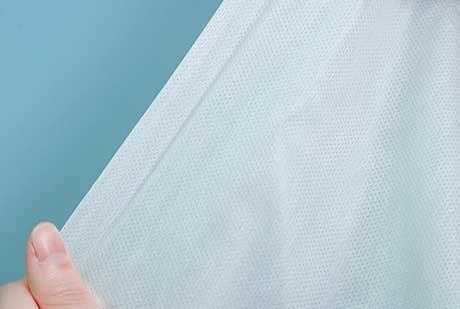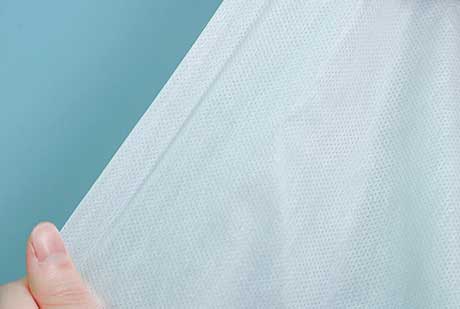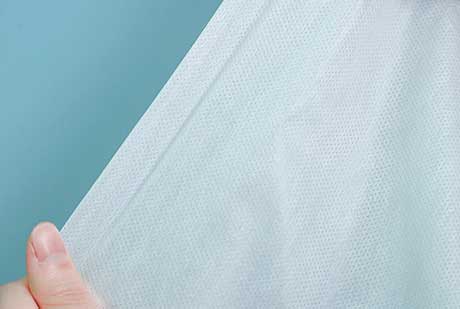Search
English
Elastic nonwoven fabric is widely used in the production of various medical products. Generally speaking, the elastic non-woven fabric is well-known for its super soft feature, outstanding elastic elongation, waterproof, and air permeability. It is a popular ear band fabric for face masks, more comfortable than thinner normal earloop string. As one of the professional non-woven cloth manufacturers in China, Canuxi believes that elastic nonwoven fabric will have large market demand in the future.
Elastic Nonwoven Fabric Specifications | |||||
| Techinic: | Spunbond SS/SMS | ||||
| Weight: | 10gsm to 75gsm | ||||
| Certificate: | SGS, OEKO-TEX | ||||
| Features: | Breathable, super soft with elastic | ||||
| Width: | From 10cm to 320cm | ||||
| Material: | 100% PP | ||||
| Pattern: | Sesame Dots with Pearl Embossing | ||||
| Supply Type: | Make to order | ||||
| Colour: | White, Black, Blue, Pink, Yellow, Red or Customized | ||||
| MOQ: | 1000KG | ||||
| Packing: | Plastic film with a special label for exporting in carton or on pallet | ||||
| Shipping Term: | FOB, CIF | ||||
| Loading Port: | Yantian Port, Shekou Port | ||||
| Payment Term: | T/T l/C WU | ||||
| Printing: | Acceptable | ||||
| Usage: | face mask ear band | ||||
| Style: | Elastic | ||||
Elastic nonwoven fabric has a wide range of applications across various industries, including:
1. Medical industry: Used in surgical gowns, protective clothing, and wound dressings for its softness, elasticity, and waterproof properties.
2. Personal care products: Found in diapers, adult incontinence products, and feminine hygiene products for its comfort and performance.
3. Hygiene industry: Used in facial wipes, cleaning wipes, and wet wipes for its absorbency and strength.
4. Automotive industry: Used in car seat covers, headliners, and door panels for its durability and flexibility.
5. Home furnishings: Found in bedding products, upholstery, and curtains for its soft texture and wrinkle resistance.
6. Apparel industry: Used in sportswear, intimate apparel, and compression garments for its stretchability and breathability.
7. Agriculture industry: Used in crop protection covers and plant containers for its moisture retention and protective properties.
These applications highlight the versatility and benefits of elastic nonwoven fabric in various industries.
Using elastic nonwoven fabric offers significant advantages in various applications, including:
1. Soft and Comfortable: Elastic nonwoven fabric is known for its super soft texture, providing a gentle and comfortable feel for users.
2. Excellent Elasticity: The fabric exhibits outstanding elastic elongation, allowing it to stretch without losing its shape. This makes it ideal for applications that require flexibility and a snug fit.
3. Waterproof and Air Permeable: Elastic nonwoven fabric is either inherently waterproof or can be treated to become water-resistant. It also allows air to pass through, ensuring breathability while maintaining a moisture barrier.
4. Easy to Work With: The fabric is easy to cut, sew, and manipulate, making it convenient for manufacturers to create products tailored to specific requirements.
5. Lightweight and Durable: Elastic nonwoven fabric is lightweight yet durable, providing long-lasting performance and comfort.
These advantages make elastic nonwoven fabric a preferred choice in industries such as medical products, personal care items, and apparel, where comfort, flexibility, and durability are paramount.
The production process of elastic nonwoven fabric involves several key steps:
1. Raw Material Selection: Suitable polypropylene (PP) or synthetic fibers are chosen for their strength and compatibility with elastic properties.
2. Fiber Formation: The fibers are processed through spinning techniques to form a web-like structure using methods such as spunbond or meltblown.
3. Integration of Elastic Component: An elastic component like spandex or elastane is incorporated into the nonwoven fabric during the fiber formation or subsequent processing steps.
4. Bonding: The non woven elastic fabric undergoes bonding processes such as heat bonding, adhesive bonding, or mechanical interlocking to enhance its strength and stability.
5. Finishing Treatments: Additional treatments like hydrophobic or hydrophilic treatments, flame retardant treatments, or antimicrobial treatments may be applied to enhance specific properties.
6. Inspection and Quality Control: Regular inspections and quality control measures are implemented throughout the production process to ensure the fabric meets specifications and performance standards.
By following this production process, manufacturers create elastic nonwoven fabric with excellent softness, elasticity, and other desired properties. The specific details may vary based on the manufacturer and product requirements.
The environmental impact of elastic nonwoven fabric should be considered for sustainable decision-making. Here are key points to note:
1. Material Source: Elastic nonwoven fabric is made from synthetic fibers derived from petroleum-based sources, contributing to carbon emissions and fossil fuel dependency.
2. Recycling and Disposal: Proper recycling infrastructure and technologies are needed for efficient recycling of elastic nonwoven fabric due to its mixed composition. Without proper recycling, it may contribute to landfill waste.
3. Biodegradability: Synthetic fibers in elastic nonwoven fabric are not readily biodegradable and can persist as microplastics in the environment.
4. Energy and Water Consumption: Production processes for elastic nonwoven fabric can consume significant amounts of energy and water, impacting resource depletion.
5. Sustainable Alternatives: Consider natural fiber-based nonwovens or bio-based polymers as more environmentally friendly alternatives.
6. Extended Product Lifespan: Proper care and maintenance of elastic nonwoven fabric products can extend their lifespan and reduce the need for premature replacements.
To reduce the environmental impact, prioritize sustainable materials, promote recycling, and explore circular economy practices. Assess the entire lifecycle of the product for informed, environmentally-conscious choices.

Elastic nonwoven fabric is super soft.

Elastic non-woven fabrics have outstanding elastic elongation ability.

As a commonly used medical non-woven fabric, the elastic non-woven fabric series can be widely used on medical products.